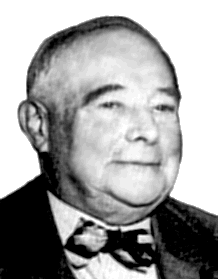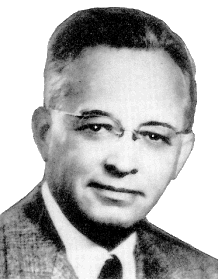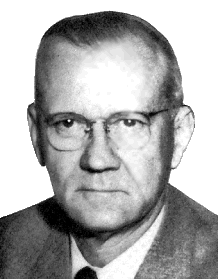Tuesday, June 21, 2005
Page 7
PERSPECTIVES (Column)
1932: County Bar Mounts Campaign to Recall Three Judges
By ROGER M. GRACE
The Los Angeles County Bar Assn. told three judges of the Los Angeles Superior Court to pack up and leave the courthouse—or else. When they wouldn’t go, the bar association had them ejected.
It was 1932. As the Associated Press on April 15 of that year told of the bold move by the County Bar (then known as the “Los Angeles Bar Association”):
“An ultimatum, either to resign at once or face a recall election to be initiated by the Los Angeles Bar Association, confronted three superior judges today. They are John L. Fleming, Dailey S. Stafford and Walter Guerin.
“The ultimatum was given the three judges by the bar association after it unanimously adopted a report condemning the manner of the handling of state receiverships by the superior court.
“A fourth superior judge, Caryl M. Sheldon, who had been implicated in the handling of the American mortgage company affairs after that firm was forced into receivership, was not asked to step from the bench. The bar association committee said its investigation of Sheldon had not been completed.”
In essence, what was alleged in the 47-page report was a “pay to play” situation. In his 1959 book “Lawyers of Los Angeles,” published by LACBA, historian W.W. Robinson (since deceased) wrote:
“Certain Superior Court judges, the report found, considered the appointment of receivers as political patronage. Men they named as receivers did not necessarily have qualifications for the job. Their naming came through their abilities as campaign workers. Judges allowed receivers excessive fees and accepted from them petty gifts and loans. Receivers were solicited to deposit funds in a bank in which one judge was interested. Receivers spent money lavishly among court attaches and newspapermen. The report found 23 American Mortgage receiverships handled by the same pair of co-receivers.”
The report concluded that Fleming, Guerin, and Stafford had “conducted themselves in a manner contrary to judicial ethics and prejudicial to the proper administration of justice.”
The Commission on Judicial Performance was not to be established until 1961. The only way to get a judge ousted was by way of a recall election. As Robinson recited, the County Bar “began an energetic and successful campaign for the recall of these three judges.”
A sufficient number of signatures was obtained rapidly on recall petitions and on Aug. 24, a special election was set for Nov. 8.
![]()
It did not look good for the judges. Even before the County Bar launched its offensive, there were press reports damaging to the three jurists. For example, AP reported on March 31 that five members of the state Legislature had been appointed as receivers, two of them after lawmakers had approved a judicial pay hike (to $10,000 a year). Fleming and Stafford were tied to those appointments, and the wire service story noted that Fleming, Stafford and Guerin had all admitted accepting gifts of clothing from two receivers.
The presiding judge of the Superior Court, Harry Archibald, had queried Chief Justice William Waste as to the possibility of the Judicial Council launching an investigation in response to concerns expressed by members of the bar, AP noted.
And, as the County Bar collected signatures on the petitions, the Los Angeles County Grand Jury was taking testimony.
![]()
The recall succeeded. It was the organized bar that brought about that result.
The vote on the recall of Fleming was 365,271 “yes,” 302,355 no; there were 308,055 votes in favor of ousting Guerin and 257,993 against it; and 371,018 votes were cast to eject Stafford from office and 297,251 to let him stay.
Elected in the stead of the deposed jurists were Los Angeles Municipal Court Judges William J. Palmer and Charles L. Bogue and Justice Court Judge William S. Baird.
If judges were today involved in the acceptance of things of value from persons to whom they gave appointments, the prospect of a recall would be miniscule in light of the existence of the CJP. But if that disciplinary body did not exist, and recall were the only means of ridding the judiciary of unethical members, would the Los Angeles County Bar Assn. be inclined to spearhead a recall effort?
I doubt it. The bar is clearly not so feisty these days as it was in the early part of the 20th Century.
![]()
So what happened to the cast of characters in that 1932 drama?
|
The Ousted Judges |
•John L. Fleming returned to law practice. At the age of 74, he was publicly reprimanded by the California Supreme Court which, on a vote of 5-2, spurned the view of the State Bar Board of Governors that he should be suspended from law practice for two years. It seems that Fleming represented an elderly woman, Lila C. Landon, at a hearing at which her daughter sought her commitment to a mental institution. Fleming defeated the effort, and, immediately after the hearing, in the corridor outside the hearing room, Fleming’s law partner secured the client’s signature on a will leaving her estate to Fleming. Fleming later became his client’s guardian and guardian of her estate. He and his wife became involved in financial transactions relating to the client’s property. A 1952 “By the Court” opinion said: “Petitioner’s conduct was unquestionably unwise and improper; it admits of suspicion as to his motives. An experienced member of The State Bar, having regard for the duties and responsibilities of his profession and the proprieties of professional relationship with his clients, should not, without further safeguards for both his client and himself, have permitted his personal interests to become so enmeshed with those of a client of the age and state of health of Mrs. Landon. We are of the view, however, that petitioner has met the burden of showing that he was not guilty of moral turpitude.” Justice Douglas L. Edmonds wrote a dissent, joined in by Justice (later Chief Justice) Roger Traynor, insisting that the Board of Governors “erred, if at all, on the side of leniency.” Edmonds wrote: “[T]he petitioner dealt with the property of his client and ward for his and his wife’s personal advantage and to the disadvantage of a woman of advanced years and questionable mental capacity whose interests he was bound to protect. More specifically, as stated by the board of governors, Fleming placed Mrs. Landon in a position where she would receive ‘So much and only so much...as respondent and his wife, in their uncontrolled discretion, might see fit to give her.’ ”
•Walter Guerin, who had served as city attorney of Pomona from 1911-21, resumed law practice in Pomona.
•Dailey S. Stafford attempted a quick political comeback in 1934, challenging then-Los Angeles Superior Court Judge Robert W. Kenny (who later served as California attorney general). One of the stances Stafford took in his campaign was support for old age pensions—not exactly a pertinent issue in a judicial campaign. The County Bar lent strong support to Kenny who drew six opponents in the primary. Kenny had received 650 votes in the County Bar pleciscite; Stafford was third with 50 votes. Stafford made it into a run-off with Kenny, but lost. If an ousted judge such as Stafford would have had any chance of regaining office, it would not have been by opposing a candidate with the magnetism of Kenny who, in the 1940s, came to be viewed by many as a presidential prospect.
|
The Newly Elected Judges |
•Charles L. Bogue served on the Superior Court only until Jan. 4, 1937 when his term ended. One decision of his which drew national attention came in 1936 in a contract dispute between actor James Cagney and Warner Brothers. Cagney wanted to get out of his $1,500-a-week contract with the studio on the ground that it had breached an oral agreement that he be required to make only four pictures a year. It had compelled him to make five. Warner Brothers denied that such an agreement had been made. The judge found on March 11 that a preponderance of the evidence showed that the oral commitment had been made, and on March 15 he awarded Cagney a judgment.
•William J. Palmer achieved prominence on the court. A Los Angeles Times article in 2000 recited that “Los Angeles County was a pioneer in what became a nationwide movement to standardize statewide jury instructions when Superior Court Judge William J. Palmer began publishing them in 1938.” However, the jurist also drew attention by defying the state’s highest court. On Jan. 4, 1941, the Associated Press reported that Palmer had refused to vacate an anti-picketing injunction he had issued three years earlier, branding the high court’s 4-3 decision ordering him to do so as unconstitutional. In August, 1961, Palmer awarded $50,000 to a man who was fired by the Teamsters Union as its business agent because, the judge found, he had refused to testify falsely before a state legislative committee. Peterson said in his 10-page opinion: “To punish a person for testifying truthfully is precisely the same as rewarding him for testifying falsely.” An article in the Van Nuys News on March 13, 1952 reflected another facet of Palmer, reporting: “Judge and Mrs. William J. Palmer will present ‘Moods of Yosemite,’ a kodachrome-musical interpretation under the auspices of the choir of the Sherman Oaks Methodist Church Sunday at 7:30 p.m. in the church. [¶] The pictures of Yosemite will be shown against a musical background which includes the theme song, one of Judge Palmer’s own compositions titled ‘Yosemite.’ [¶] Superior Court Judge William J. Palmer is almost as well known for his hobbies as he is for his achievements in the law, in which he is nationally recognized for his books, decisions and articles.” In his 1993 book “Rememb’ring,” retired Los Angeles Superior Court Judge McIntyre Faries (since deceased) said that Palmer was “the greatest stickler for punctuation and for English usage I ever knew” and at meetings of the court’s Rules Committee, it was “very difficult to get him away from spending half the meeting on whether a comma or semicolon should be used at a given point.”
•William S. Baird spent three decades on the Superior Court, retiring Feb. 1, 1952. Some of the lighter moments got into print. Among his cases was one in which actress Gail Patrick (later “Perry Mason” executive producer Gail Patrick Jackson) was suing for divorce from Robert H. Cobb, owner of the Brown Derby restaurants. United Press reported on Nov. 14, 1940 that Patrick testified that Cobb’s disposition “humiliated me, embarrassed me, and made me nervous and ill.” UP said Baird interjected: “Well, you must have known his disposition.” She nodded in agreement and Baird asked: “Well, then, why did you marry him?” The actress responded: “We were both Irish.” A 1942 wire service story said: “Superior Judge William S. Baird knows women as well as law. [¶] “A lawyer asked Charles K. Matthay yesterday if his actress-wife Virginia Hall felt she had been properly clothed. [¶] “ ‘No woman,” observed the judge, ‘feels she is properly clothed.’ ” A 1943 report from United Press began: “Superior Court Judge William S. Baird is believed to be the only judge who ever awarded alimony to a horse.” He approved an agreement under which the husband made monthly payments for the upkeep of two horses.
|
|
|
|
|
|
The Judge Who Was Spared |
•Caryl Sheldon, who had been elected to the Superior Court in 1930 and was said to have been “implicated” in the misdeeds, was, in the end, not targeted for a recall, notwithstanding his admitted receipt of clothing from receivers he had appointed. But when he sought reelected in 1936, the County Bar backed one of his eight opponents. Sheldon nonetheless prevailed, and continued to serve on the Los Angeles Superior Court until his retirement in 1963. He was presiding judge of the Superior Court in 1947. In one ruling, he acted to preserve Olvera Street, which had been the main street in the pueblo of Los Angeles, by barring traffic on it (a bar that continues today). Sheldon died April 3, 1993, at the age of 100.
Copyright 2005, Metropolitan News Company


